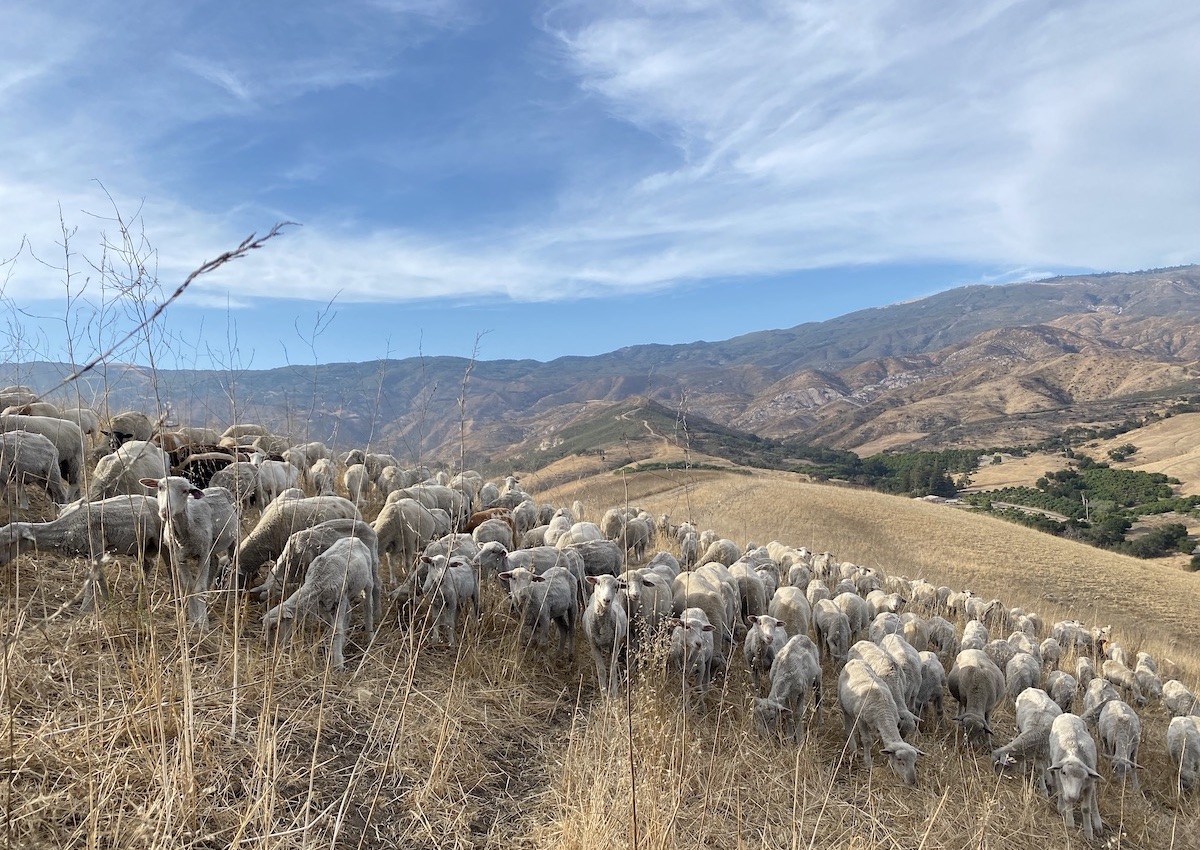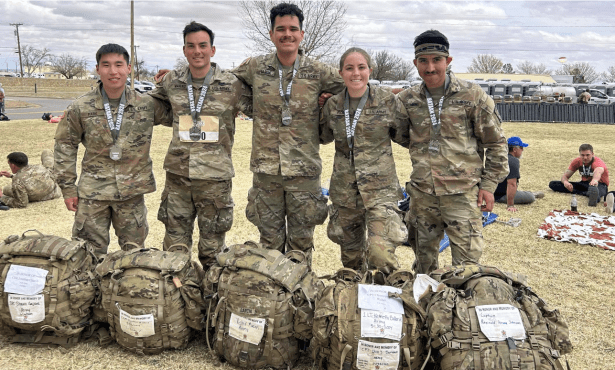Sheep Docents Wanted to Spread the Good News About Ewes
Channel Islands Restoration Seeking On-Site Volunteers to Field Questions About Grazing Program at San Marcos Foothills Preserve

To restore native grassland and help prevent the spread of wildfires, 150 ewes (female sheep) and their lambs are currently grazing in the West Mesa of the San Marcos Foothills Preserve, a public grassland located in Santa Barbara near Highway 154, where they will remain until late February. In the meantime, the organization that oversees the grazing program is looking for volunteer lamb liaisons to inform curious preserve visitors about what’s up with all the ewes.
Channel Islands Restoration (CIR), in partnership with Cuyama Lamb, began its 2023 sheep-grazing program at the San Marcos Foothills in January, following positive results of grazing in previous years. From 2018 to 2021, sheep grazed the grasslands in the Foothills Preserve to weed out invasive European grasses, and data collected by CIR showed a marked decrease in invasive grasses and a dramatic increase in native plant species. In addition, the lack of the thick, dry grasses slowed down the 2018 Cave Fire when it burned through the grazed plots.
“Many of the plants had not been seen before the grazing started,” said Ken Owen, CIR’s executive director. “The whole structure of the landscape changed from thick, tall-growing European grasses to a much more open landscape with a much higher percentage of native plants. This structural change is what we were hoping for, because it is exactly that type of habitat that birds that are dependent on grasslands require for breeding.”
CIR is now accepting volunteers to become sheep docents, who are on-site three times a day while the ewes are grazing to help inform the public about the benefits of grazing and answer any questions the community might have regarding why sheep are present at the West Mesa. All grazing happens in fenced pastures about two acres in size, with the sheep residing in a single pasture for one to three days before moving on to the next in what is called “rotational grazing.” It takes the sheep about three to four weeks to graze the grassland on the West Mesa.
To support their program, CIR started a fundraising campaign last year, and so far, they have received about $5,000 in donations from the neighborhood, which Owen called a “good start,” but they are still “some distance from a long-term solution to paying for the whole program.” He said that the Santa Barbara Fire Safe Council received a grant from CalFire, and they should be grazing again at the end of the wet season, which will include areas on the county-owned preserve that they can afford to graze now.
“We are currently paying to graze about 75 acres of the West Mesa mostly out of our general budget,” Owen said. “It will cost around $26,000 — at a highly discounted price by Cuyama Lamb — but that is a big chunk of money for a small nonprofit to spend…. The CalFire grant will last for three years, but it’s important to know that grazing only once a year is not nearly as effective as grazing once early in the season and again at the beginning of the dry season.
“This is a long-term process, but we are playing the long game, and the public will directly benefit from our work,” Owen continued.
The opportunity to become a sheep docent will be open to the community through the end of February. CIR is hosting three informational sessions on February 15, 18, and 20 for interested participants. To learn more about volunteering and how to support the program, visit cirweb.org.



